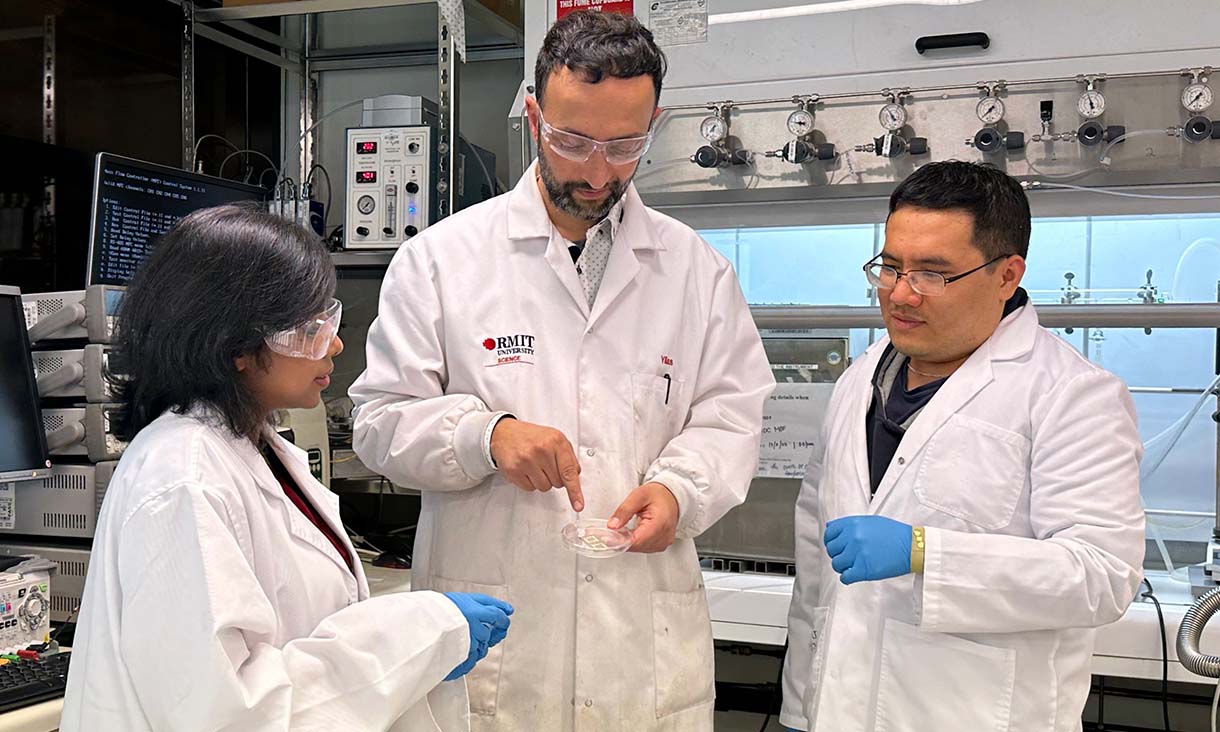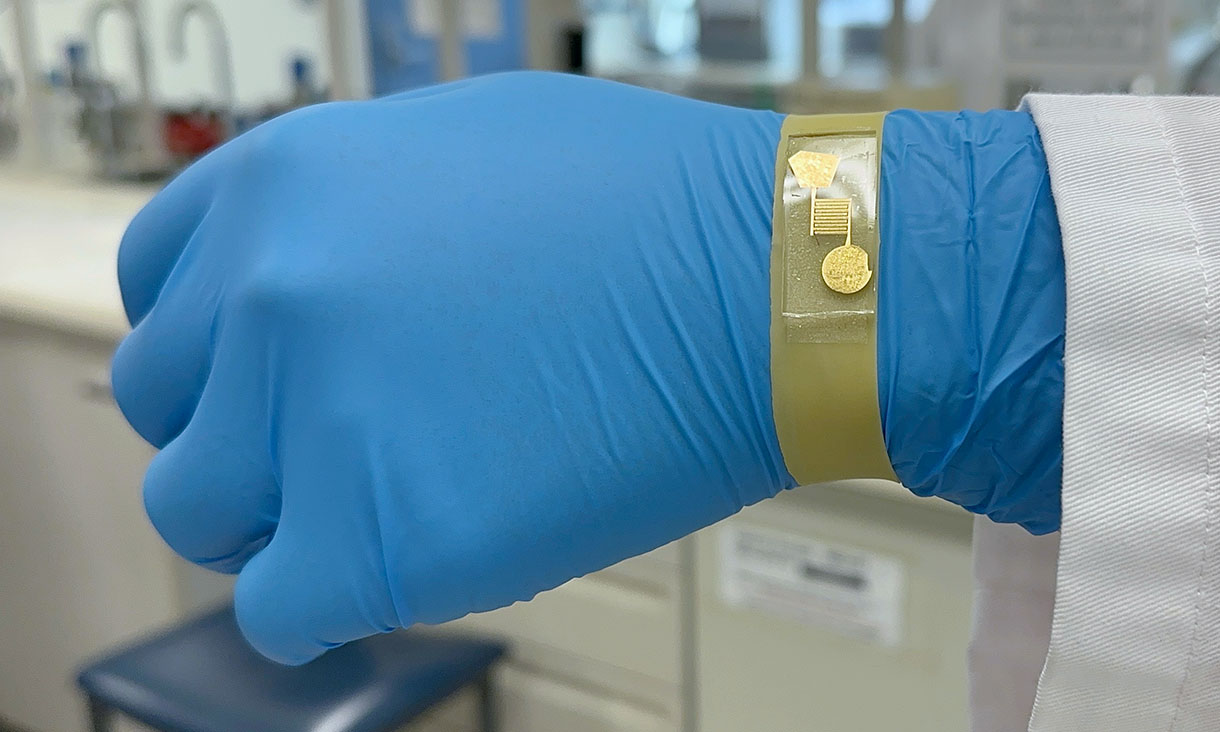Novel Nose-Like Sensor Detects Toxic Ammonia Gas Through Sniffing Mechanism
Engineers in Australia have developed a small ammonia gas sensor that could enable safer hydrogen storage and specialised medical diagnostic devices.
The simple yet effective proof-of-concept sensor described in top academic journal Advanced Functional Materials is the result of collaboration by researchers at RMIT University, the University of Melbourne and the ARC Centre of Excellence for Transformative Meta-Optical Systems (TMOS).
Exposure to high levels of ammonia can lead to chronic lung conditions and irreversible organ damage.
An estimated 235 million metric tonnes of ammonia are produced around the world annually, but with ammonia being touted as one of the best ways to store hydrogen for clean fuel we may be seeing a lot more of it.
Reliable and sensitive ammonia detection will be essential to quickly spot potentially dangerous leaks of ammonia gas during transportation of hydrogen, to ensure safe operation.
But while human exposure to ammonia can be harmful, the gas is also found in human breath and can serve as a vital biomarker for diagnosis of many diseases such as kidney and liver-related disorders.
Given that the team’s sensor can measure tiny amounts of ammonia, it could be engineered to detect the gas on people’s breath to alert doctors to health disorders.
 Lead researchers Dr Nitu Syed, Dr Ylias Sabri and Dr Chung K. Nguyen (left to right) in their lab at RMIT University. Credit: Seamus Daniel, RMIT
Lead researchers Dr Nitu Syed, Dr Ylias Sabri and Dr Chung K. Nguyen (left to right) in their lab at RMIT University. Credit: Seamus Daniel, RMITHow the sensor works
Senior lead researcher Dr Nitu Syed said the sensor featured atomically thin transparent tin dioxide that can easily track ammonia at much smaller levels than similar technologies.
“Our device acts like an electric ‘nose’ by efficiently detecting even the tiniest amount of ammonia,” said Syed, McKenzie Research Fellow from the University of Melbourne, RMIT and TMOS.
“The sensor is also able to distinguish ammonia from other gases with more selectivity than other technologies.”
The presence of ammonia in the air changes the electrical resistance of the tin oxide film in the sensor: the higher the level of ammonia, the greater the change in the resistance of the device.
The team conducted experiments with their sensor in a specially designed chamber to test its ability to detect ammonia gas at various concentrations (5 – 500 parts per million) under different conditions, including temperature. They also tested the device’s selectivity of ammonia against other gases, including carbon dioxide and methane.
First author, Dr Chung K. Nguyen from RMIT, said their miniaturised sensor offered a safer and less cumbersome way to detect the toxic gas, compared to existing techniques.
“Current approaches to ammonia detection produce accurate measurements but require expensive laboratory equipment with qualified technicians, extensive sampling and preparation,” Nguyen said.
“This process is often time-consuming and not portable, due to the size of the equipment needed. In addition, the manufacturing of today’s ammonia detectors involves expensive and complicated processes to prepare sensitive layers for sensor fabrication.”
The team’s new sensor can instantaneously differentiate between safe and dangerous levels of ammonia in the environment, Nguyen said.
“The reproducible deposition of tin oxide also offers the opportunity for cost-effective mass production of sensing devices,” he said.
 The team used a low-cost and scalable technique to deposit super thin tin dioxide onto a base material – even on a flexible material, which other approaches had challenges achieving. Credit: Seamus Daniel, RMIT
The team used a low-cost and scalable technique to deposit super thin tin dioxide onto a base material – even on a flexible material, which other approaches had challenges achieving. Credit: Seamus Daniel, RMITHow the sensor is made
Co-senior lead researcher Dr Ylias Sabri, from RMIT’s School of Engineering, said the team used a low-cost and scalable technique to deposit super thin tin dioxide onto a base material – even on a flexible material, which other approaches had challenges achieving.
“We directly harvest a tin oxide film from the surface of molten tin at 280 degrees Celsius. The film is 50,000 times thinner than paper,” Sabri said.
“Our approach only requires a single synthesis step, without using any toxic solvents, vacuum, or bulky and expensive instruments.”
Next steps
The team is keen to collaborate with industry partners to further develop and prototype the sensor to demonstrate its high-performing sensing capabilities.
“The fabrication method aligns well with existing silicon industry manufacturing processes, making it suitable for mass production.”
Support for the research
The Australian Research Council funded the research, which was also supported by the National Computational Infrastructure, as well as the Microscopy and Microanalysis Facility (RMMF) and Micro Nano Research Facility (MNRF) at RMIT and the Department of Chemical Engineering and School of Physics at the University of Melbourne.

